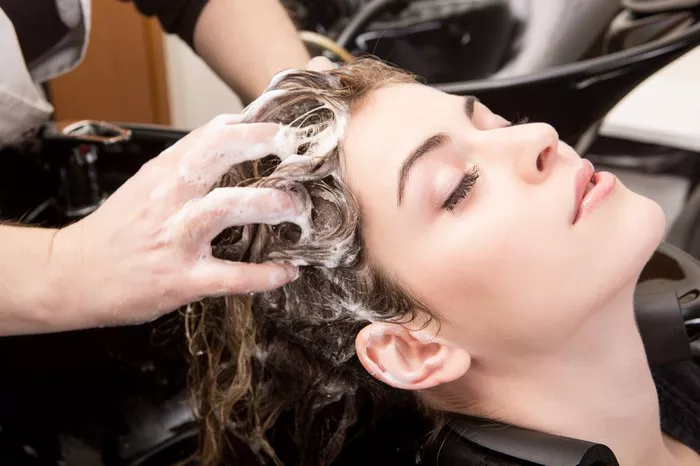If you’ve ever dealt with dry, brittle, or damaged hair, you’ve probably heard about protein treatments. But what exactly do they do? How do they work? And who needs them? In this detailed guide, we’ll break down everything you need to know about protein hair treatments, including their benefits, how they repair hair, and how to use them safely. Let’s dive in.
Understanding Hair Structure: Why Protein Matters
To grasp how protein treatments work, we first need to understand the basics of hair structure.
Hair is made of three layers:
- Cuticle: The outermost layer, made of overlapping scales that protect the inner layers.
- Cortex: The middle layer, containing proteins (like keratin), moisture, and pigments.
- Medulla: The innermost layer (not always present in fine hair).
Keratin, a type of protein, is the building block of hair. It gives hair strength, elasticity, and structure. Over time, factors like heat styling, chemical processing (coloring, perming), and environmental stress (sun, pollution) break down keratin, leaving hair weak, porous, and prone to breakage.
What happens when hair loses protein?
- The cuticle becomes rough and lifted, causing frizz.
- The cortex weakens, leading to split ends and breakage.
- Hair loses elasticity (snaps easily when stretched).
Protein treatments aim to rebuild this lost protein, restoring hair’s strength and resilience.
What Is a Protein Hair Treatment?
A protein treatment is a product or service designed to infuse hair with proteins that temporarily patch damage, strengthen strands, and improve hair’s ability to retain moisture.
Key ingredients in protein treatments:
- Hydrolyzed proteins (wheat, soy, keratin): Broken into small molecules to penetrate hair.
- Amino acids: Building blocks of protein that repair gaps in the hair shaft.
- Silk or collagen proteins: Add smoothness and shine.
How it works:
- The proteins fill in gaps in the damaged cuticle and cortex.
- They create a protective layer to reduce future damage.
- Strengthened hair becomes less porous, locking in moisture.
Types of Protein Treatments
Not all protein treatments are the same. They vary by protein type, intensity, and application method.
By Protein Size
- Large proteins (e.g., collagen): Sit on the hair’s surface, smoothing the cuticle.
- Small proteins (e.g., hydrolyzed keratin): Penetrate deeper into the cortex for structural repair.
By Intensity
Light Protein Treatments
- For: Slightly damaged hair, regular maintenance.
- Form: Leave-in conditioners or lightweight masks.
- Frequency: Weekly.
Moderate Protein Treatments
- For: Chemically treated or heat-damaged hair.
- Form: Creamy masks applied for 10–20 minutes.
- Frequency: Every 2–4 weeks.
Intense Protein Treatments
- For: Severely damaged hair (bleaching, over-processing).
- Form: Salon-grade treatments with higher protein concentration.
- Frequency: Every 4–6 weeks.
By Application
- At-home treatments: Over-the-counter masks or sprays.
- Salon treatments: Professional-grade formulas with customized processing.
Who Needs a Protein Treatment?
Protein treatments aren’t for everyone. Here’s how to tell if your hair needs one:
Signs you need protein:
- Hair feels mushy or stretchy when wet.
- Excessive shedding or breakage.
- High porosity (hair absorbs water quickly but dries fast).
- Loss of elasticity (hair snaps instead of stretching).
- Damage from bleach, color, or heat tools.
Who should avoid protein treatments?
- Low-porosity hair (protein can cause buildup).
- Hair that’s already stiff or brittle (over-proteinized).
Benefits of Protein Treatments
When used correctly, protein treatments offer transformative results:
Reduces Breakage
- Repairs weak spots in the hair shaft.
- Prevents split ends from traveling up the strand.
Improves Elasticity
- Restores hair’s ability to stretch and bounce back.
Smooths the Cuticle
- Flattens lifted scales, reducing frizz and boosting shine.
Enhances Moisture Retention
- Less porous hair holds onto hydration longer.
Protects Against Future Damage
- Strengthened hair resists heat, friction, and chemical stress.
How to Apply a Protein Treatment
At-home steps:
- Cleanse: Use a clarifying shampoo to remove buildup.
- Apply: Section hair and coat strands evenly with the treatment.
- Process: Follow timing instructions (usually 10–30 minutes).
- Rinse: Use cool water to seal the cuticle.
- Moisturize: Follow with a conditioner to balance protein.
Salon process:
- A stylist may use heat (steam or a hooded dryer) to enhance penetration.
- Treatments are tailored to your hair’s porosity and damage level.
Protein vs. Moisture: Finding the Balance
Protein and moisture work together. Overdoing protein can make hair stiff, while too much moisture causes limpness.
Signs of protein overload:
- Stiff, straw-like texture.
- Increased breakage.
- Dullness or lack of movement.
Fix it: Use a moisturizing deep conditioner and avoid protein for 2–3 weeks.
Signs of moisture overload:
- Hair feels gummy or too stretchy.
- Lack of definition (in curly hair).
Fix it: Use a light protein treatment to restore structure.
Risks and Mistakes to Avoid
- Overuse: Too much protein causes brittleness. Stick to recommended schedules.
- Wrong product: Fine hair needs lightweight proteins; coarse hair benefits from heavier formulas.
- Skipping moisture: Always follow protein with a conditioner.
How Often Should You Use Protein Treatments?
- Fine or damaged hair: Every 4 weeks.
- Thick or coarse hair: Every 6–8 weeks.
- Healthy hair: Use a light protein product monthly for prevention.
Pro tip: Monitor your hair’s response. Adjust frequency based on feel and elasticity.
DIY vs. Salon Protein Treatments
- DIY pros: Affordable, convenient.
- DIY cons: May lack customization; results vary.
- Salon pros: Stronger formulas, professional assessment, longer-lasting results.
- Salon cons: Higher cost.
Top Ingredients to Look For
- Hydrolyzed keratin
- Amino acids (arginine, cysteine)
- Silk protein
- Quinoa or oat protein
Conclusion
Protein treatments are a powerful tool for repairing damaged hair, but balance is key. Pair them with moisture, avoid overuse, and consult a stylist for severe damage. Healthy hair starts with understanding its needs—and protein is often the missing piece.
Related topics:
What Does Protein Hair Treatment Do? Transforming Your Locks
10 Secrets on Increasing Hair Density
Does Biotin Promote Hair Growth? Experts Weigh In on the Popular B Vitamin


